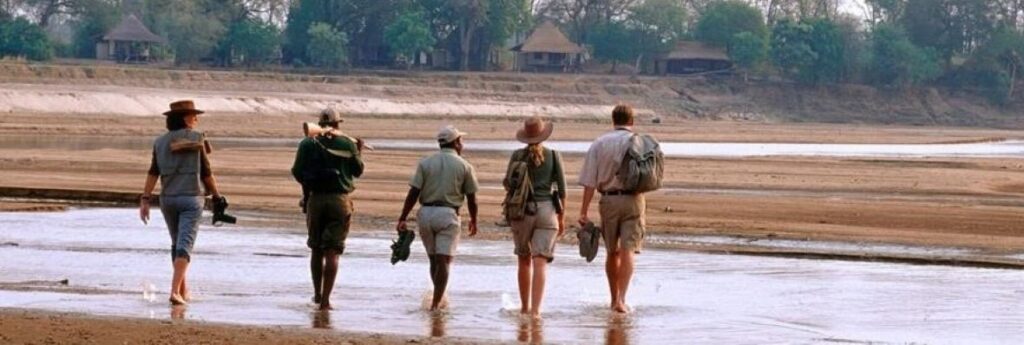The slow travel movement – which is gaining speed as an emerging trend – embodies the idea that the journey, like a fine wine, is more rewarding and beneficial when it is savoured – whether that means staying put in one place for longer, exploring places that are less known and visited by tourists, or using human-powered transportation (like hiking, kayaking, or biking) to move from place-to-place.
Slow travel encourages immersion into our surroundings which allows a fuller and deeper connection to the people, places, and experiences available there. In other words, slow travel emphasizes the enjoyment of the experience itself, rather than ticking things off the list.
“Slow travel is really the antithesis of going places for the sake of checking them off your list so you can say you’ve ‘been there and done that,’” says Scott Abbott, Director of Product and Marketing at Wilderness Travel. “In slow travel, the focus shifts to connection – to places, people, and yourself.
“We see so much value in slow travel, for visitors themselves, but also for destinations that benefit more from this style of travel. This is why pacing our itineraries well, and including unusual activities and off-the-beaten path locations, is so important to us. We try to bring this principle of going beyond surface level interactions into all the trips that we offer.”
The slow travel movement grew out of the slow food movement, which itself was born in Rome, Italy, in protest to the opening of Italy’s first McDonalds. The movement brought attention to local gastronomic tradition and experience, prioritizing regional ingredients, and preserving traditional ways of knowing and creating. Similarly, the slow travel and tourism movement prioritizes local connection, meaningful experience, and deeper immersion into places visited.
As it was for many things, the pandemic acted as an accelerant for the slow travel movement. As people’s priorities and perspectives began to change, and movements like self-care and wellness began to take hold, slow travel also grew.
Some benefits associated with slow travel include increased environmental consciousness among travellers, increased likeliness to revisit and recommend a place, increased economic development and benefit in destinations, and enhanced cultural exchange and understanding. An EHL insights report predicts that demand for slow travel experiences will see a 10% compound annual growth rate.
Here are three trips by Wilderness Travel that embody slow travel principles:
Zambia Walking Safari
Zambia is the birthplace of the walking safari. On this 10-day journey, led by expert Trip Leader Jason Alfonsi, guests will step out of the vehicle and experience Zambia on foot. Exciting game walks reveal aspects of wild Africa in a way that is impossible to experience from a vehicle. On foot, guests become a part of the environment and it’s a much richer experience. As they say, from a vehicle, you see the bush – on foot, you feel it! South Luangwa National Park – 9.100 sq. km. of protected wilderness—is an unforgettably beautiful place. Guests stay in private Hemingway-style mobile camps to ensure cozy comfort along the way. Just six guests can join this trip at one time.
Glacier National Park and Blackfeet Powwow
If your idea of slow travel is full immersion, look no further than this unique hiking and cultural experience in one of the most stunning settings in Montana’s Rockies. A 7-day journey, this trip focuses on active cultural adventure and exchange, weaving together the story of a people and a place as guests witness the annual powwow of the Blackfeet Nation and hike in the grand landscapes they have called home for over 10,000 years. With drumming, singing, and spectacular dances, the Blackfeet Powwow blends both the old and new traditions of a proud, enduring, and vibrant culture. Trip Leader Melissa Scott has spent significant time on the Blackfeet reservation guiding guests and supporting interpretation from locals to enjoy and understand the significance of the celebrations. Afterwards, guests hike Rocky Mountain trails in Glacier National Park and savour stunning Montana sunsets. Overnights are in historic national park lodges.
Treasures of Ireland’s West Coast
The long west coast of Ireland is blessed with islands, peninsulas, seaside villages, and the most stunning sea cliffs in Europe. Guided by Wilderness Travel’s legendary Irish Trip Leaders, guests will explore the west coast, a stronghold of Irish culture, with hikes atop the breathtaking Cliffs of Moher, through the moonscapes of the Burren, with its Bronze Age burial sites, along pilgrim trails on Ireland’s holy mountain Croagh Patrick, and in wild Connemara and the fascinating Aran Islands. Meet farmers, musicians, and artists, savor sea-to-table cuisine, hear the lilting sound of the fiddle in local pubs, and enjoy a warm welcome at historic lodges and island guesthouses.
If this article was shared with you by a friend or colleague, you may enjoy receiving your own copy of Travel Industry Today with the latest travel news and reviews each weekday morning. It’s absolutely free – just CLICK HERE.

